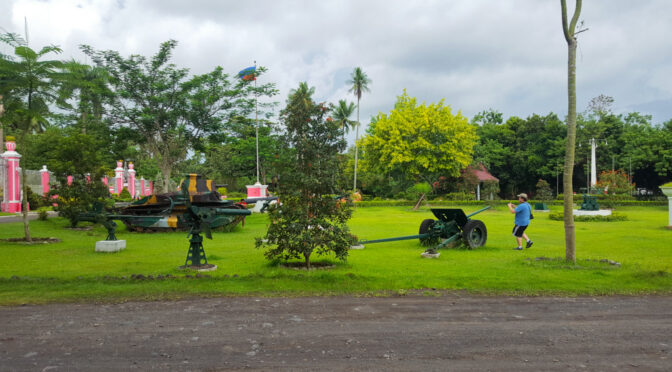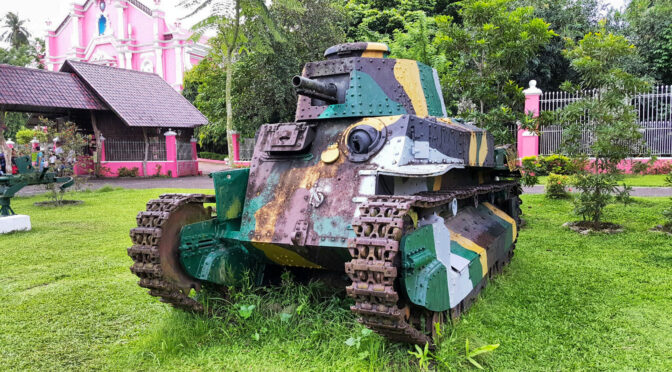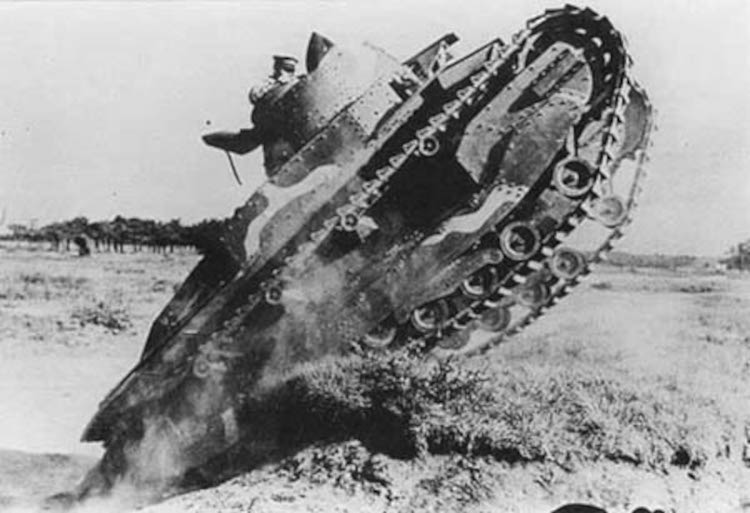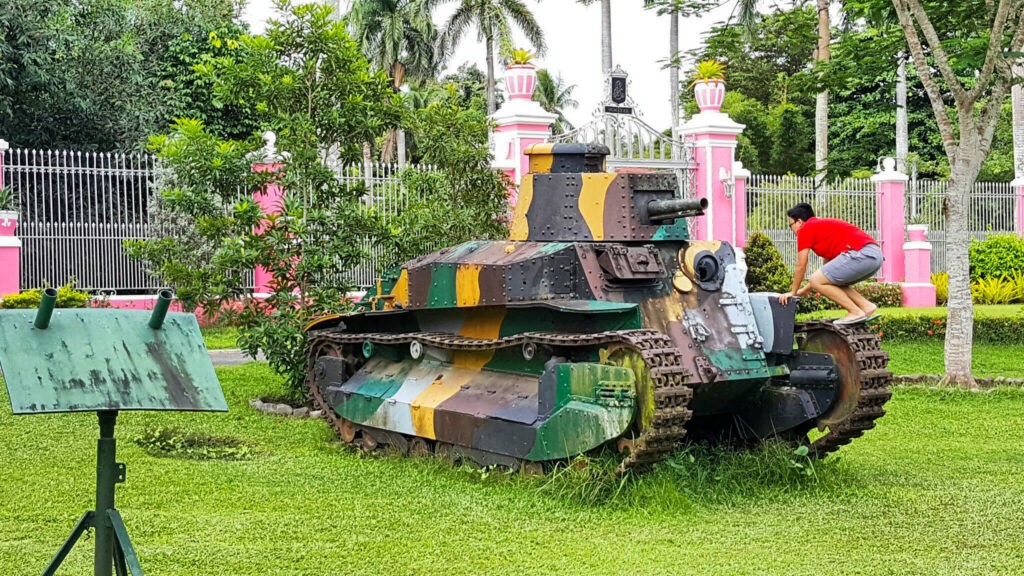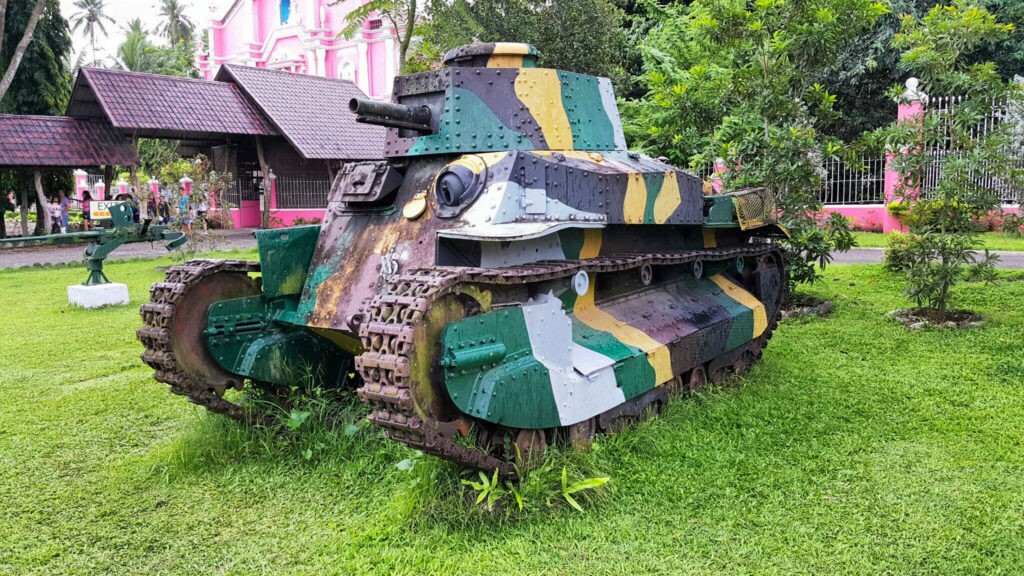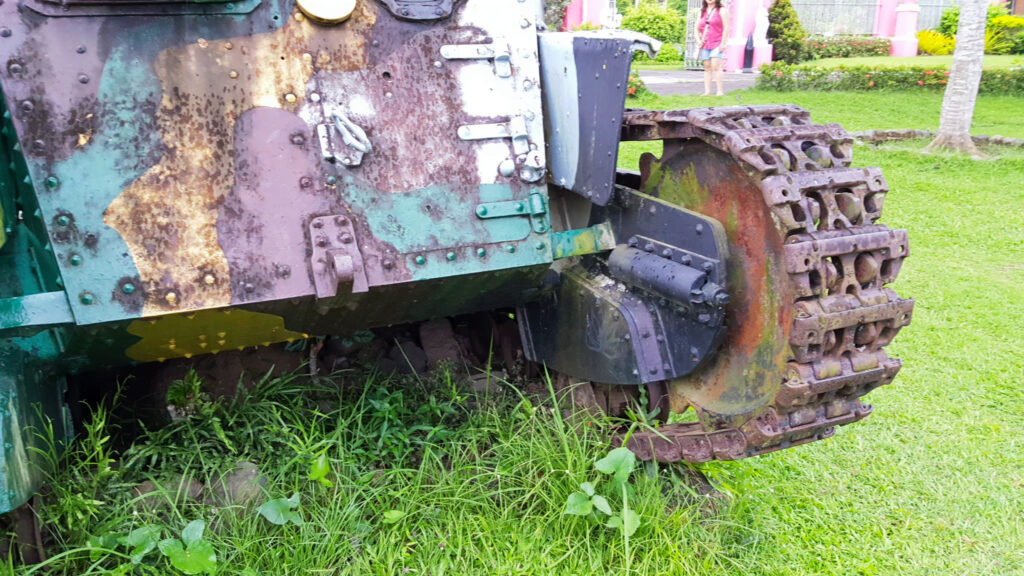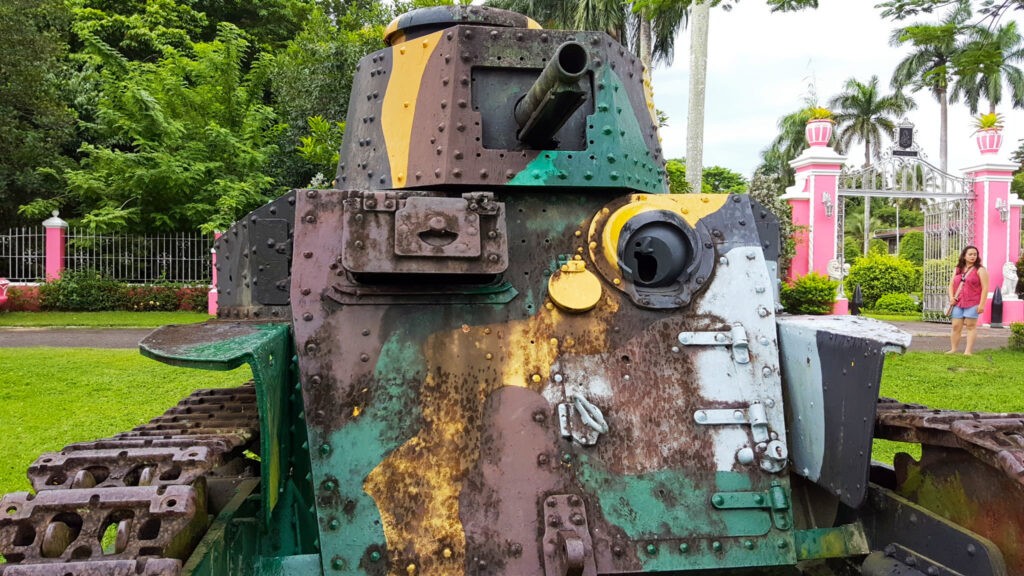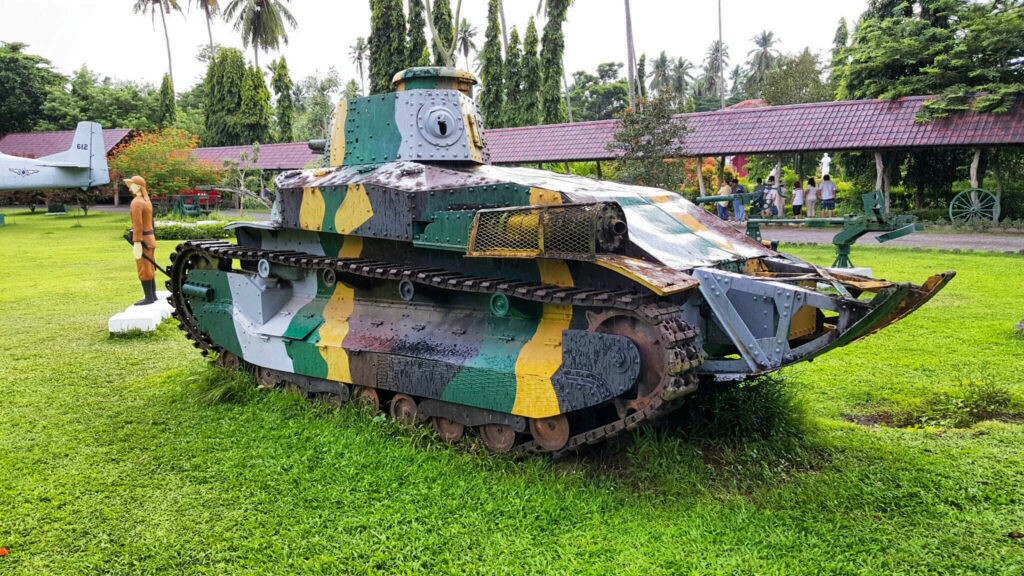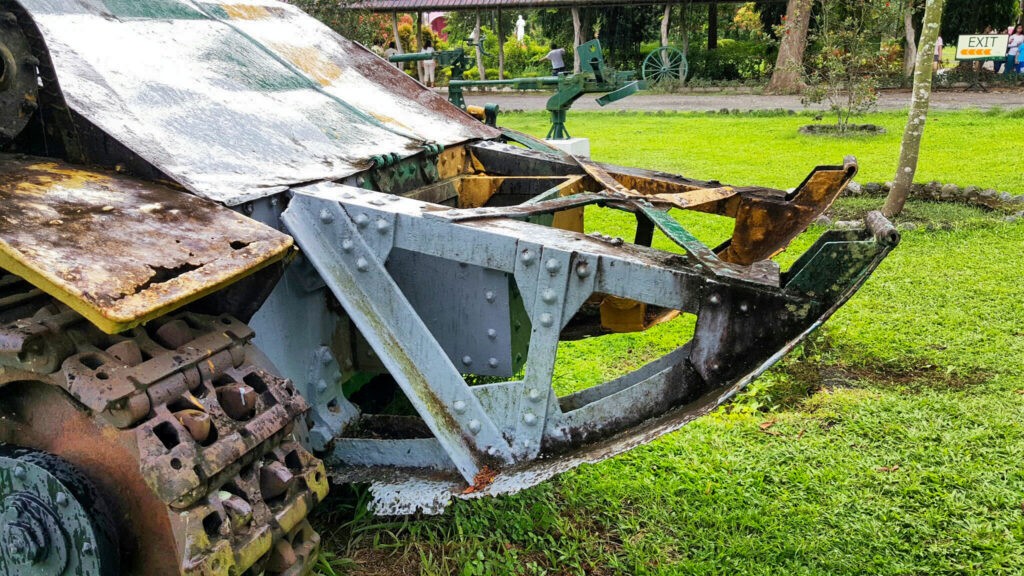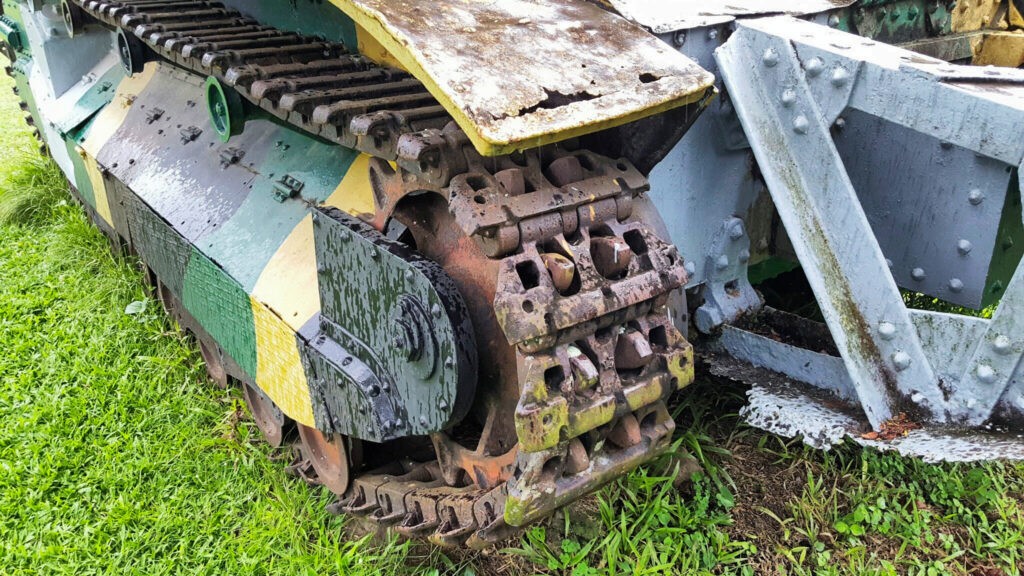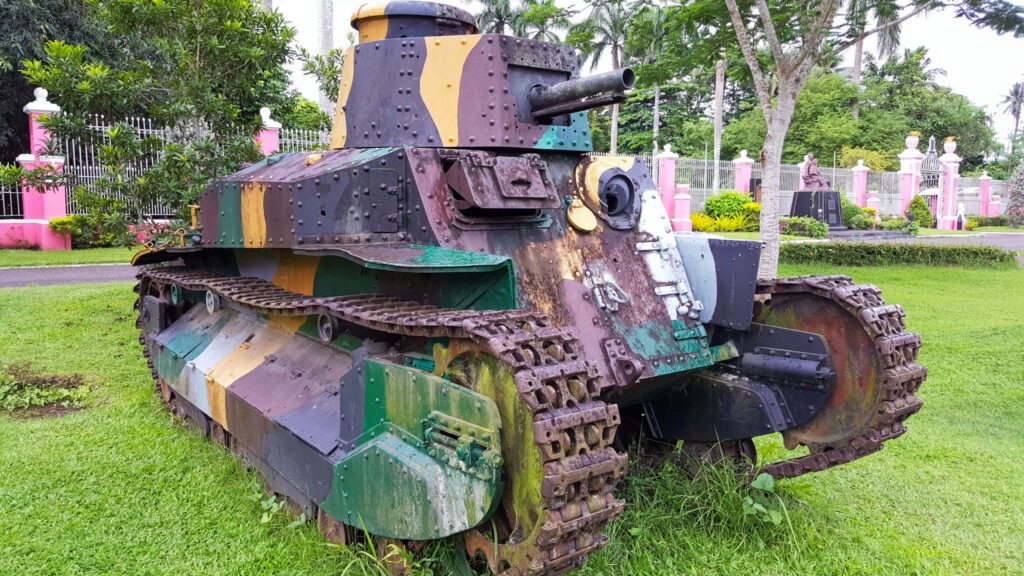In my last post, I introduced Villa Escudero located near Quezon in the Philippines. I have a few more photos of static displays near their museum that I want to share in this last post from the visit.
Japanese Type 96 25mm Anti-Aircraft Gun – Single Mount
The Type 96 was a variant of the French Hotchkiss 25mm anti-aircraft gun and was made in Japan.
The Japanese produced the Type 96 anti-aircraft cannon with single (1943), double (1935) and triple (1941) gun mounts. The weapon was generally considered reliable but the mounts were very slow to move.
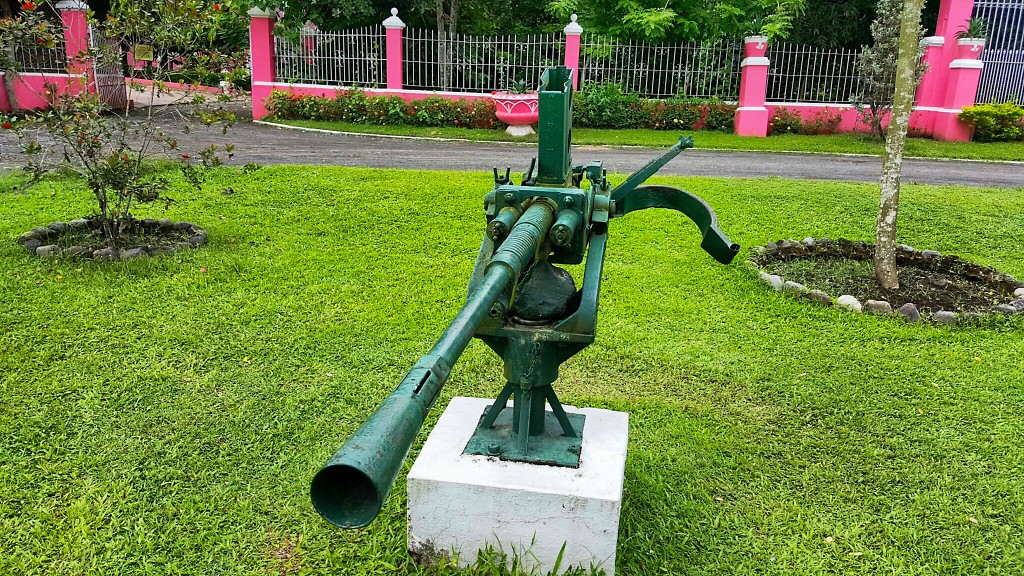
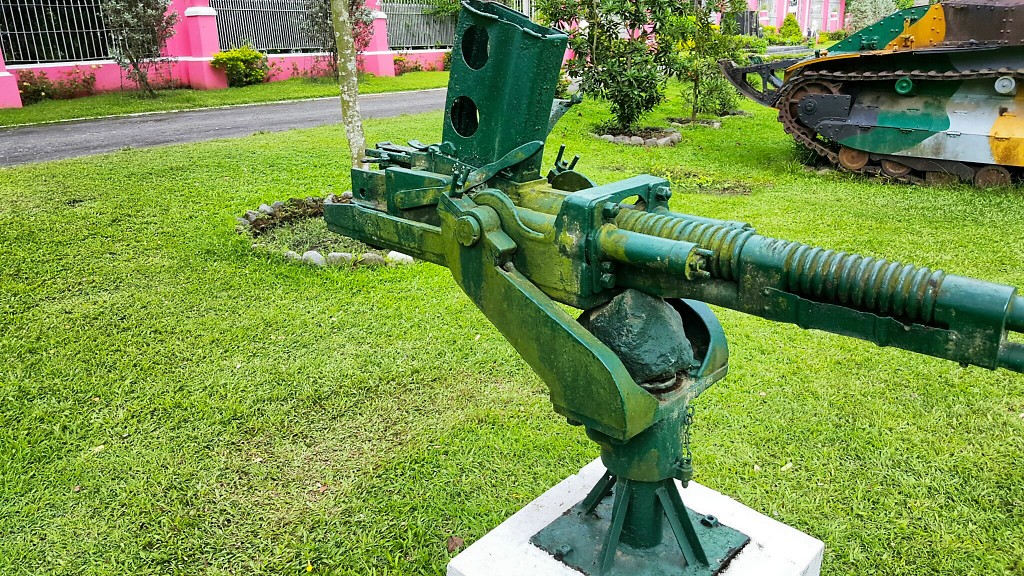
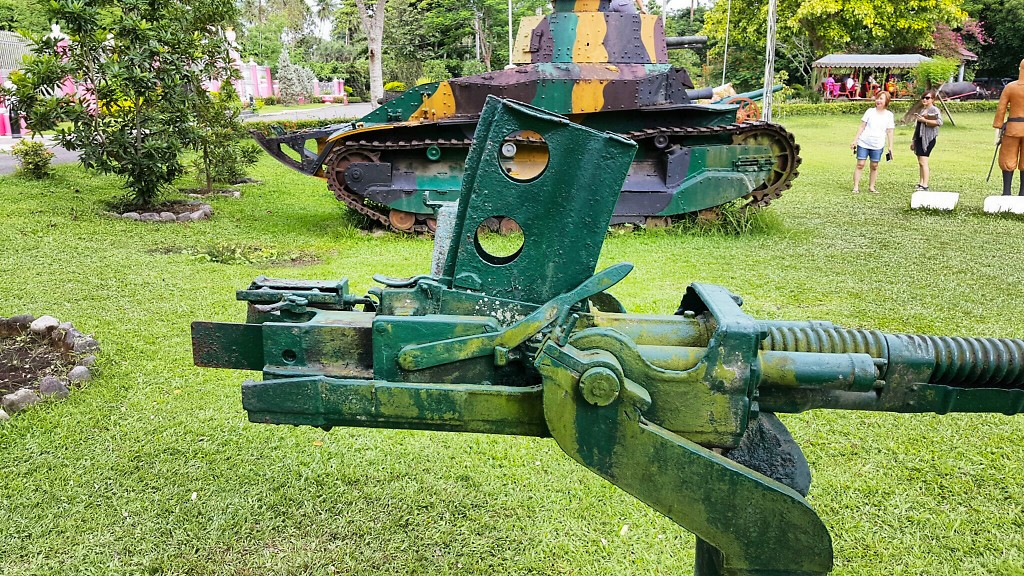
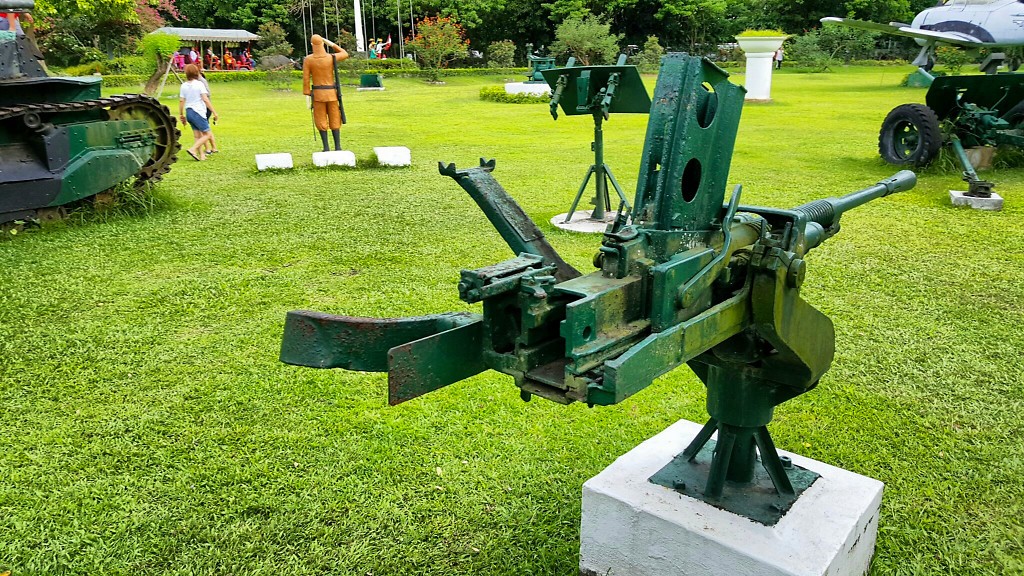
If you want to learn more, check out:
- https://en.wikipedia.org/wiki/Type_96_25_mm_AT/AA_gun
- http://www.navweaps.com/Weapons/WNJAP_25mm-60_mg.php
Japanese Type 1 mobile 47 mm Rapid Firing Anti-tank Gun
The Type 1 was produced at the Osaka Army Arsenal – reflecting it was the year 2601 of the Japanese imperial year and went inhto production in 1942 with a total of approximately 2,300 being built.
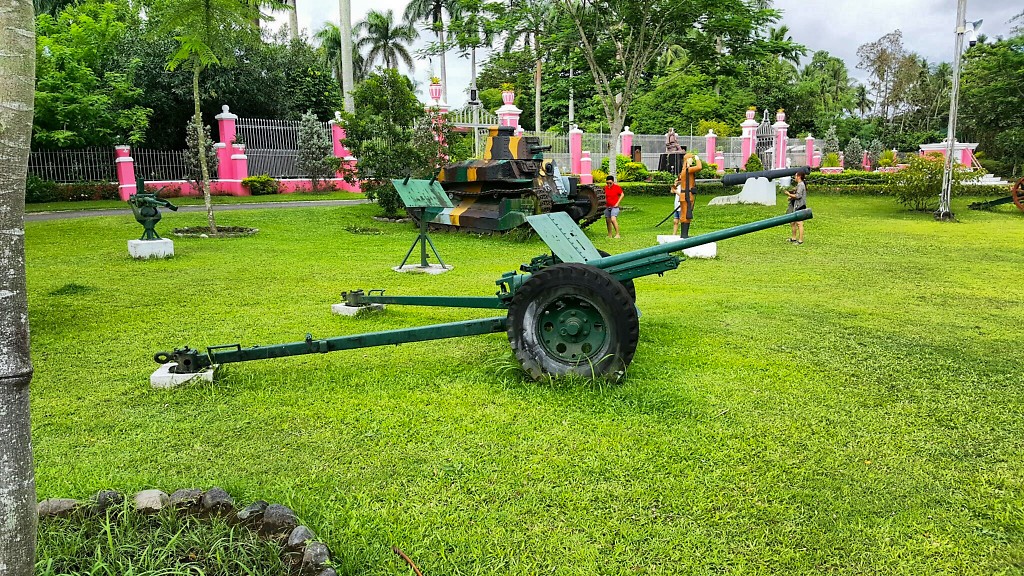
To learn more, check out:
- https://en.wikipedia.org/wiki/Type_1_47_mm_anti-tank_gun
- https://www.lonesentry.com/articles/ttt09/japanese-47mm-antitank-gun.html
- https://www.lovettartillery.com/47mm_Type_1_Japanese_AT_Gun.html
North American T-28 Trojan From the Philippine Airforce
This T-28 was a trainer aircraft used by the US Airforce and Navy well into the 1980s. It was also sold to a nubmer of militaries including the Philippine airforce until 1994. A fellow on another page said the serial number of the plane at Villa Escudero is 174-565 and if I look that up, it was sold to the Philippines in November 1958 and disposal approved on February 22, 1977. I was there in 2016 so it showed up there sometime between those dates.
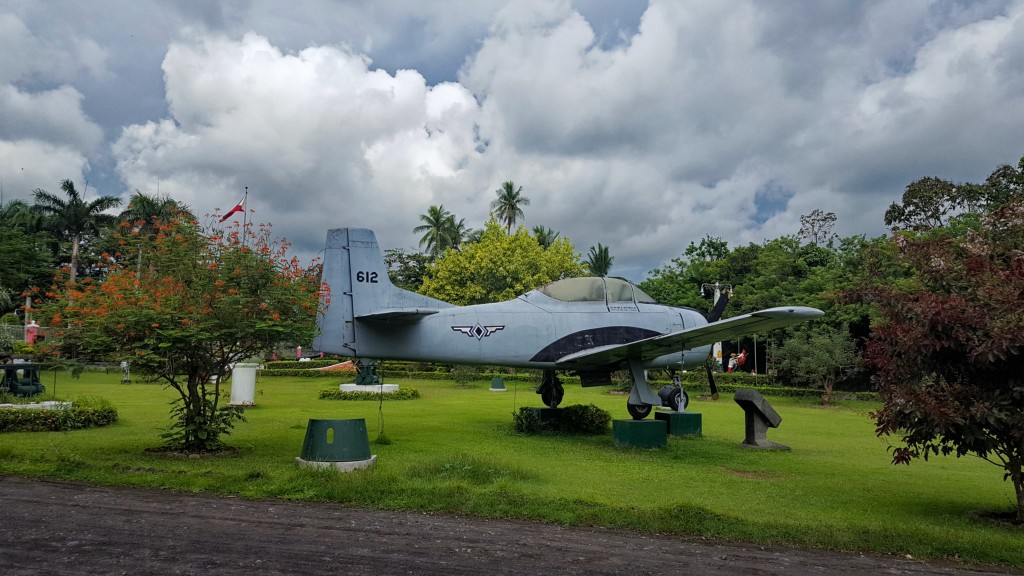
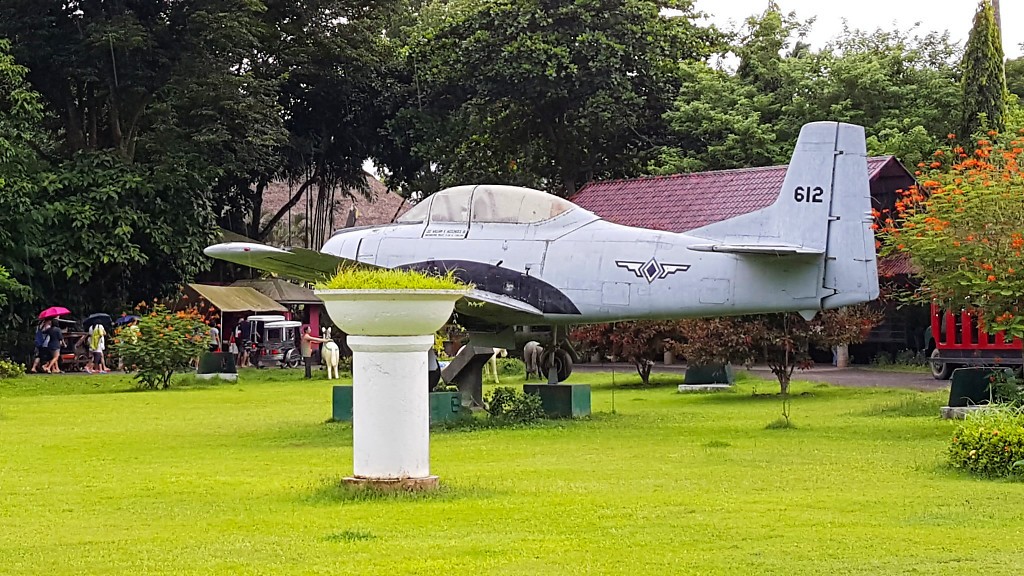
To learn more about the Trojans, check out:
- https://en.wikipedia.org/wiki/North_American_T-28_Trojan
- https://www.history.navy.mil/content/history/museums/nnam/explore/collections/aircraft/t/t-28-trojan.html
- https://www.jetphotos.com/airport/Other+Location+-+Villa+Escudero+
- This page has many plane serial numbers and a bit of info about each – http://cgibin.rcn.com/jeremy.k/cgi-bin/gzUsafSearch.pl?target=51-513&content=
Prop Gun With More Displays Visible
My best guess is that the gun mount is authentic – though I don’t know what it is, but the “gun” are mockups.
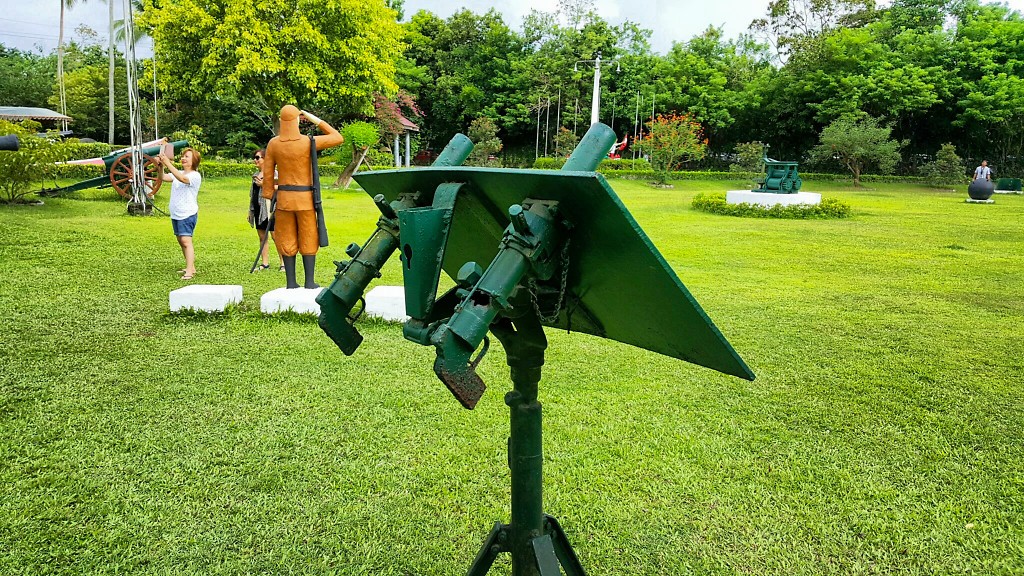
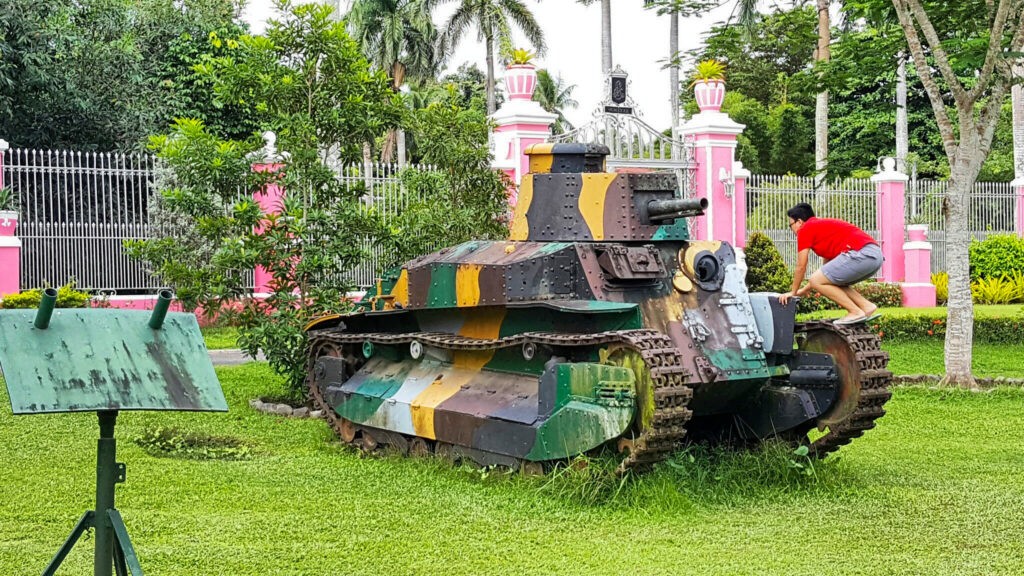
Closing
There was more to see at Villa Escudero. Why I didn’t take more photos, of the displays, I don’t know. It was a beautiful resort and I will end this with my favorite photo from there.
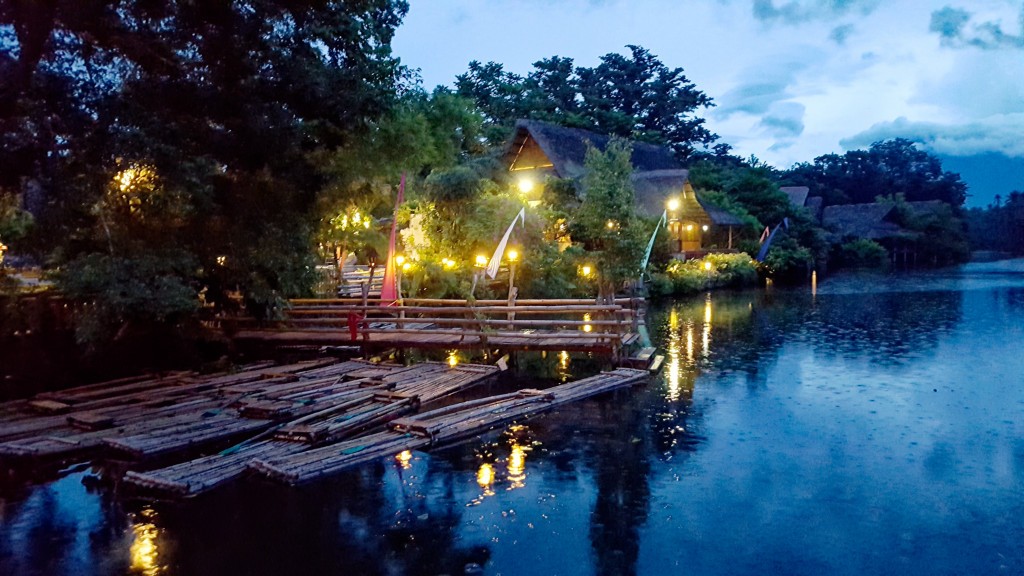
If you find this post useful, please share the link on Facebook, with your friends, etc. Your support is much appreciated and if you have any feedback, please email me at in**@*********ps.com. Please note that for links to other websites, we are only paid if there is an affiliate program such as Avantlink, Impact, Amazon and eBay and only if you purchase something. If you’d like to directly contribute towards our continued reporting, please visit our funding page.
